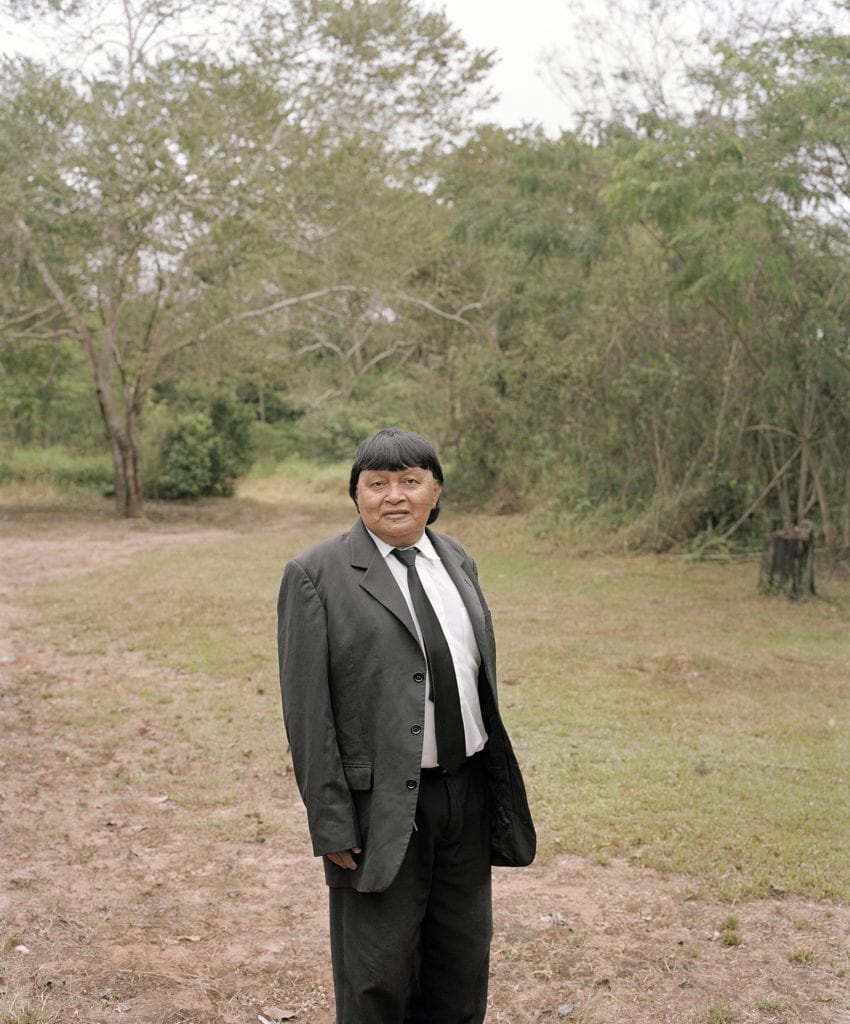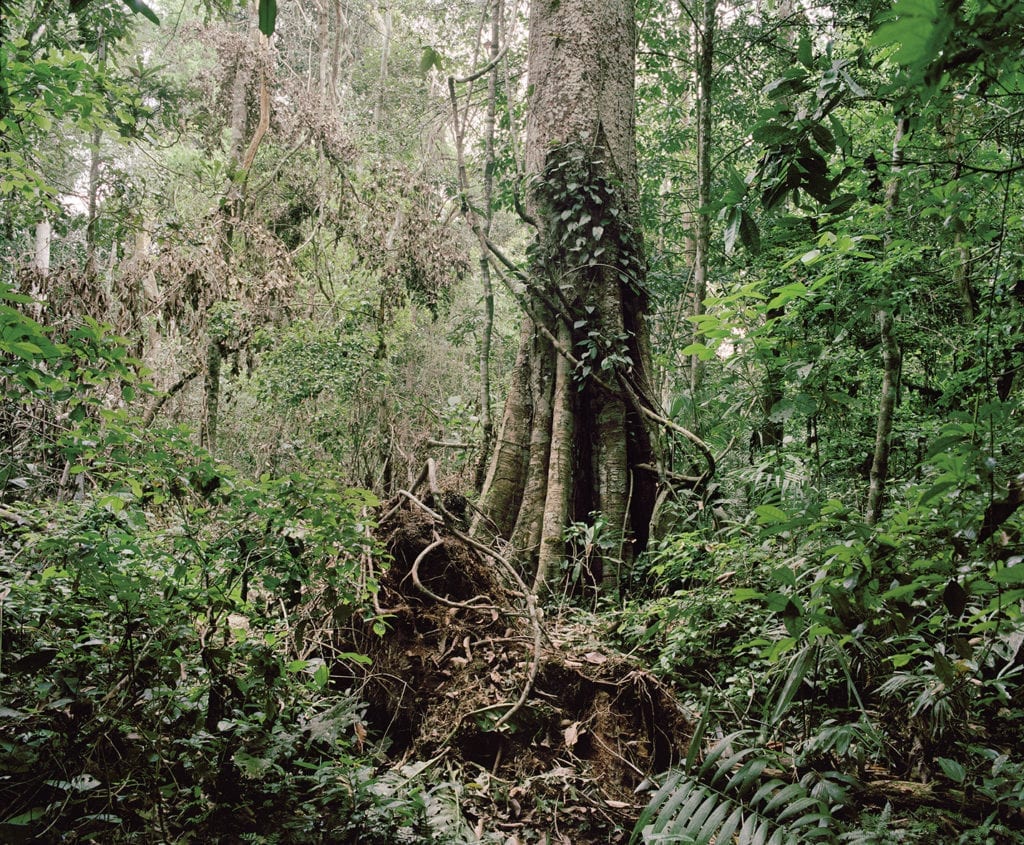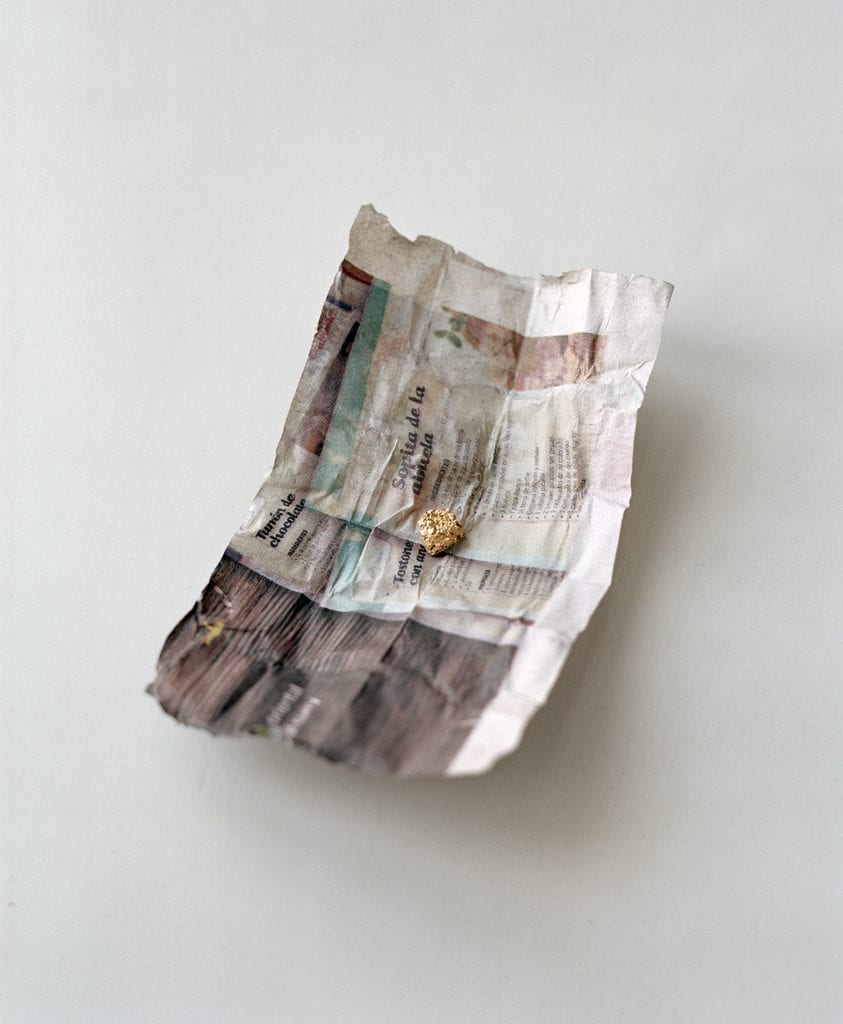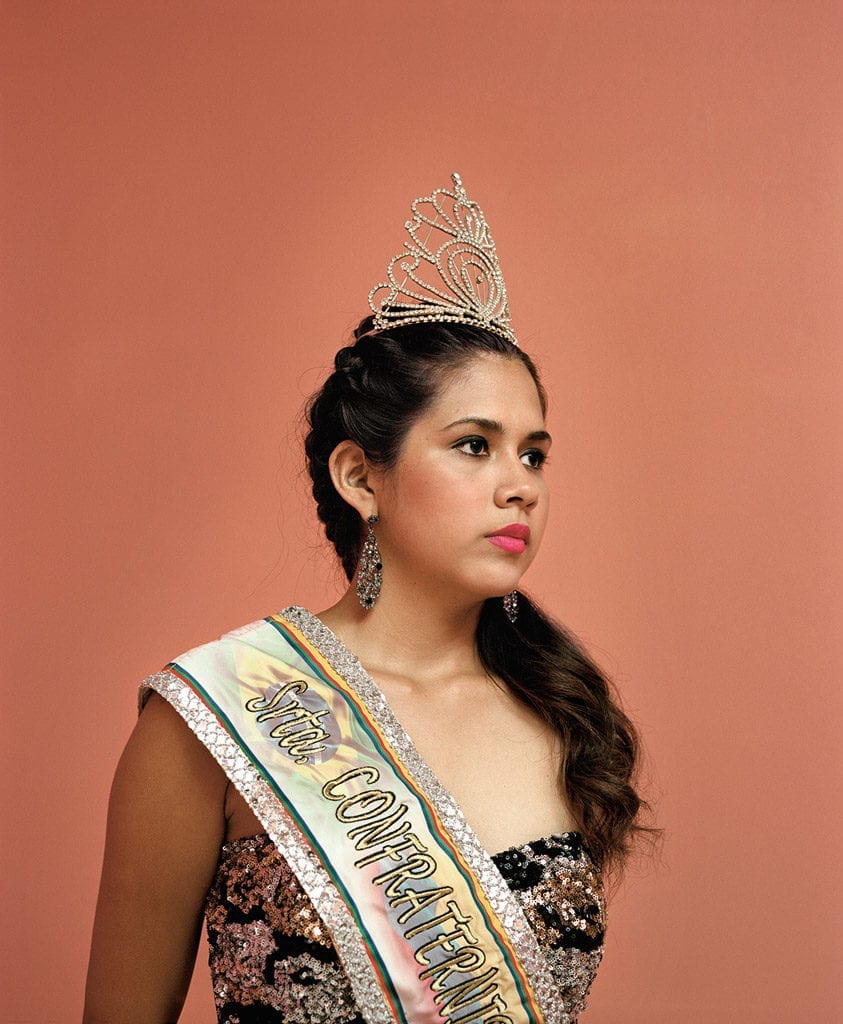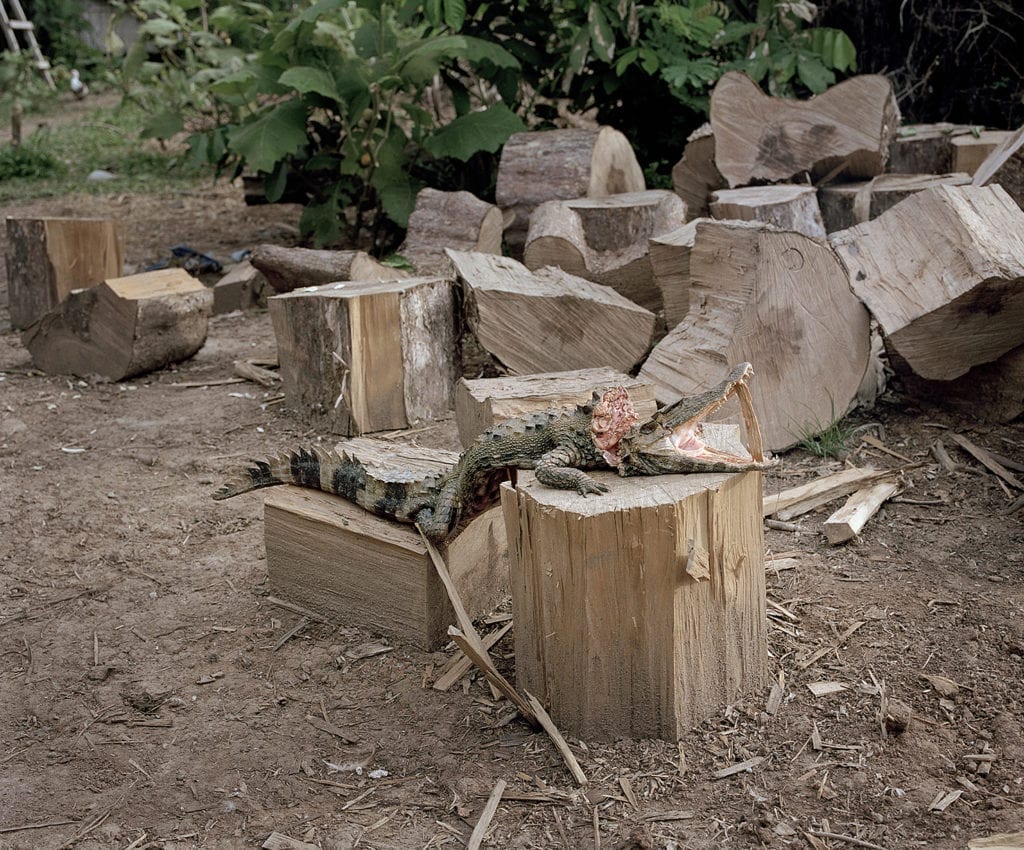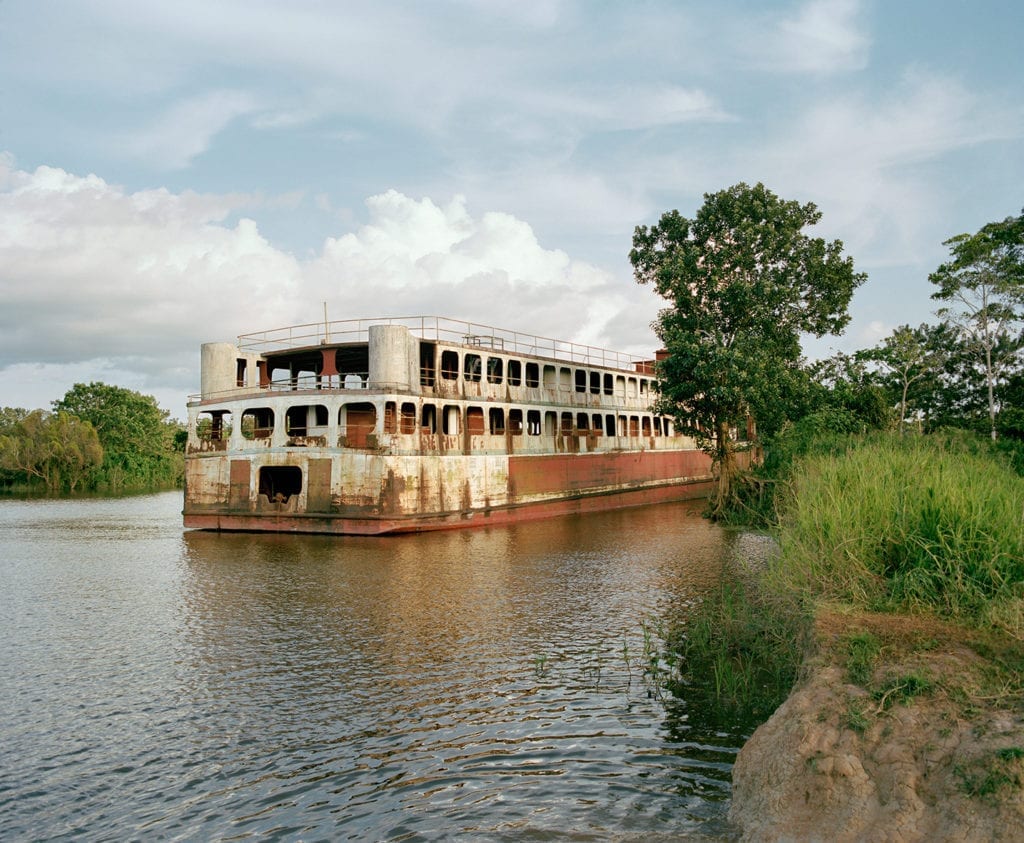A traditional prophecy said that some day a giant snake would come and swallow up the Suruí people, destroying them and everything else in its path. The snake arrived in 1969. It’s called the Trans-Amazonian highway. In the wake of its completion, missionaries rushed in to evangelise the Suruí people, who are native to the Amazon rainforest. This act of faith profoundly changed indigenous beliefs because the missionaries encouraged the shamans to abandon their ancestral rituals. Perpera Suruí was the wawã, or shaman, of the community of Lapetanha. He is now the gatekeeper for the Evangelical church in the village and has given up his shamanic practice. Perpera Surui, a former shaman, is now the porteiro, or church doorkeeper. The Surui all speak the indigenous language and are proud to defend their identity. However, since the first contact with the outside, various influences changed the daily routine of the Surui lifestyle: an evangelical church is the weekly meeting place for the community and the mass is spoken in the Surui language. All images © Yann Gross, courtesy of Aperture. The Suruí’s story is just one of many that alludes to the rapid acculturation faced by indigenous communities since the days of colonialism. The Jungle Book: Contemporary Stories of the Amazon and Its Fringe is a visual experience comprising discreetly staged scenes that reveal the diverse worlds of the Amazon and its surrounding areas.The Mashco-Piro, a semi-nomadic tribe, live in voluntary isolation near the Río Las Piedras. Published by Aperture, the book contains a collection of stories that demystify Amazonia, probing fiction and reality to both play with the perceived stereotypes and convey the contemporary lived experiences of the local inhabitants. For the series, Swiss photographer Yann Gross worked with different local communities and documented the dynamic culture of the Amazon as influenced by contemporary economic and social forces. Gold nugget, Delta Uno, Peru, 2015. In the jungle boomtown of Delta Uno, buying gold is easy. The mercury-amalgamation process involves mixing elemental mercury with silt that contains tiny pieces of gold. When the mercury is added to the silt, it sticks to the gold, forming a solid mercury-gold amalgam. This amalgam is then heated, which vaporises the mercury and leaves behind the gold. The mercury often seeps into the air and rivers, polluting the environment in the Madre de Dios region. Gross’s monograph possesses a sensitivity that steers away from exoticise d tropes of the noble savage. Instead we see photographs of men clothed in ancestral dress juxtaposed with women due to compete in Western-style beauty contests, while images of trafficked drugs are set alongside medicinal plants, magical charms and wild animals. Valentina Del Aguila Vasquez, Iquitos, Peru, 2013. Vasquez is considered to be the most beautiful woman in the Amazon. She won the Miss Amazon Confraternity beauty pageant in Leticia, in which Brazilians, Colombians and Peruvians all participate. The first prize includes an envelope with US$1,000, an orthodontic treatment and cosmetic surgery at a reputable clinic in Bogotá. “The merit of this book rests for many in its tacit, nearly humble, acceptance that this land doesn’t exist,” explains Arnaud Robert in the publication’s prologue. “It is only an agglomeration, phantoms and reconstructions resolved neither by nostalgia nor by conquest. It answers mirages with more mirages. In the furthest depths of the jungle, we only stumble upon a variant, sweaty and exhausted, of ourselves.” The Breakfast, 2012. Freshly caught caiman is prepared as breakfast in the Bolívar community on the banks of the Rio Curaray, Peru. MF Marcelita, Río Itaya, Iquitos, Peru. The Peruvian Navy confiscates vessels discovered transporting drugs. The boats are often left abandoned and rusting along the riverbanks. As Werner Herzog wrote to him: “This is big, as it reaches beyond the fever dreams that brood in Amazonia. Looking at this book it appears as if a curse weighs on the entire landscape, everywhere, from horizon to horizon.” The Jungle Show II will be on show at the Swiss Cultural Centre (SAC), Paris, until 4 December 2016. The Jungle Book is published by Aperture . For more, go here .
